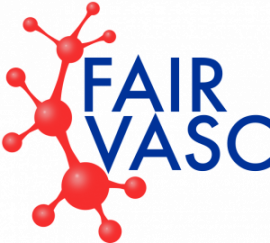1. FAIRVASC has entered its final year. Do you have any comments on PAO’s presence in

Peter also participates in projects like Target-t-b! in which a consortium of clinical, translational and fundamental research groups and companies combine their strength in immunology, hemato-oncology, diagnostics and clinical experience.
It was a very interesting experience to participate in such a complex and high-tech project. A project where interesting challenges like technology, methodology and legal issues played such a dominant role. In the beginning the differences in the structure and storage of local registries seemed the most important thing to us, but more and more it became clear that issues like, security, privacy, and regulations are at least as important and difficult to deal with. It was impressive to see how FAIRVASC managed to bring together such an excellent group of experts in all these areas. And all these experts were willing to not only explain to us the details of their challenges and solutions but also to get us involved as a respected partner in those areas whenever they – or we – felt it could be beneficial to the project. Laymen as we are we felt fully part of the project and the team which allowed us to represent patients to the best of our ability.
2. What activities of FAIRVASC do you participate in and do you find it valuable as a patient?
We have been involved in brainstorming with the legal team about the way FAIRVASC deals with our data and how this data can be stored and handled in a secure and safe way.
We participated in the design of the dashboard user interface, and we have got the opportunity to safeguard the FAIR character of the solution. Our voice was heard when we discussed the sustainability of the project, and we were encouraged to disseminate the results and ideas to our own network as well as to healthcare providers in our own countries. This allowed us to wholeheartedly promote the idea of establishing further re-use of a stable, open-source “FAIR access point” that other rare disease registries can install and adapt.
3. What advice would you give to the vasculitis researchers around the world from the patient perspective?
One of the key characteristics of a project is that there is a defined beginning and end. However, we very much hope that the end of this project will only mark the beginning of an era in which researchers and clinicians keep working on high-volume, high-quality data sets with a statistically significant numbers of observations for AAV patients. Data sets that are easily accessible for medical professionals involved in trying to speed up the diagnostic process. Data sets that can be used to develop new insights and biomarkers to limit the number of serious new cases. Data sets also that will help us to improve the current treatment and thereby the quality of life of existing patients. To researchers we would therefore say: “Pick up what have been created so far and keep buildig on it”, while to funding agencies we would like to say “Be aware of the importance of the sustainability of a project like this and enable researchers to further develop what FAIRVASC created.”
